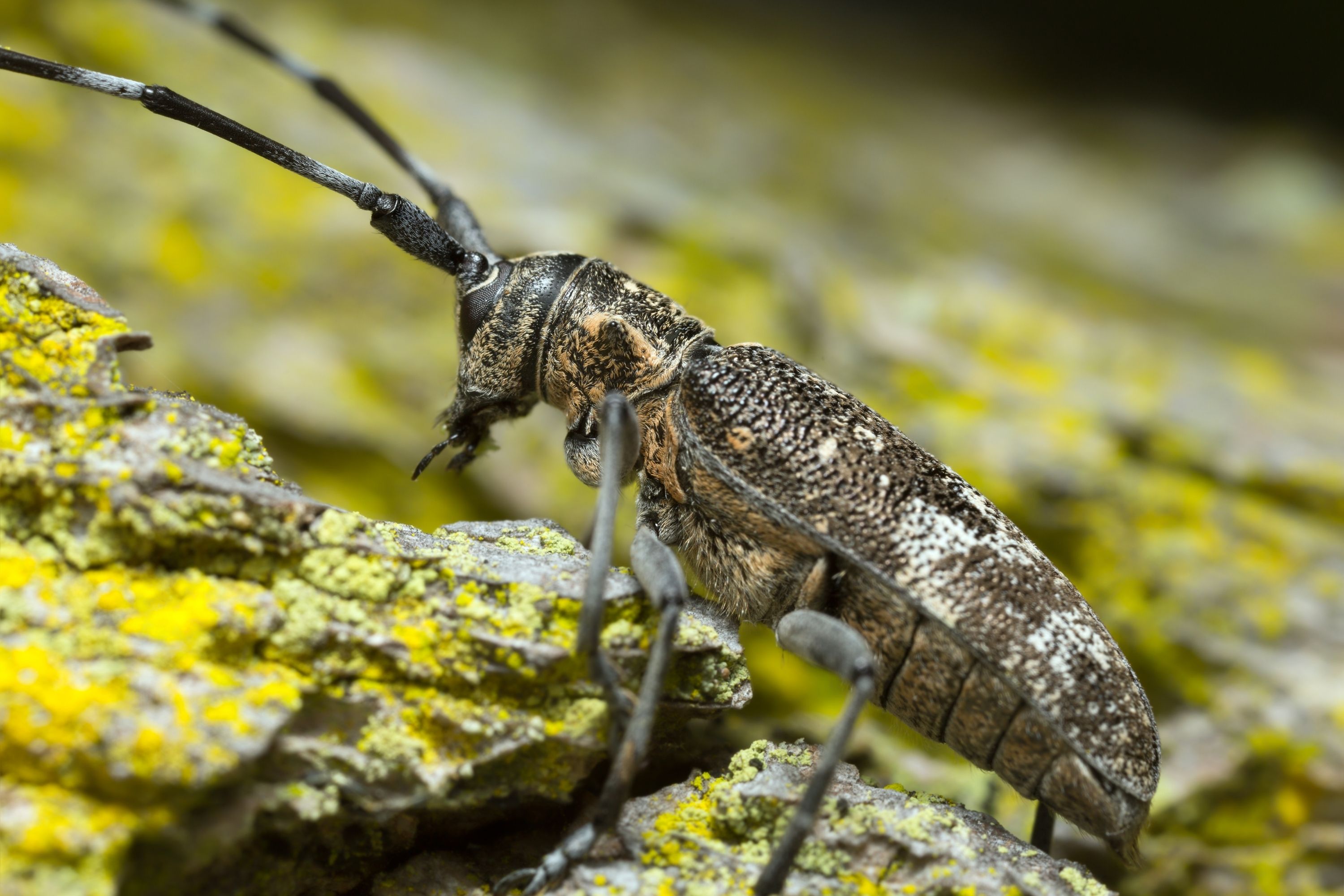Timberman Beetle
(Monochamus galloprovincialis)

Description
Monochamus galloprovincialis, the pine sawyer beetle, also referred to as the black pine sawyer beetle, is a species of beetle in the family Cerambycidae. It was described by Olivier in 1795, originally under the genus Cerambyx. It has a wide distribution, occurring naturally throughout Europe and the Caucasus. It has also been introduced into the Canary Islands. It serves as a vector for the parasitic nematode species Bursaphelenchus xylophilus, and also acts as a host to the parasitoid wasp species Dolichomitus tuberculatus. Adult beetles are strong fliers, and in flight mill experiments were, on average, able to fly 16 km over the lifetime of the beetle. The adult male produces an aggregation pheromone to attract females. Monochamus is a genus of longhorn beetles found throughout the world. They are commonly known as sawyer beetles or sawyers, as their larvae bore into dead or dying trees, especially conifers such as pines. They are the type genus of the Monochamini, a tribe in the huge long-horned beetle subfamily Lamiinae, but typically included in the Lamiini today. If sawyer beetles infect freshly cut pine logs, they can cause a 30–40% loss in value due to the tunnels their larvae bore. It is important to process logs within a few weeks of cutting or store them in water to minimize damage. Some species are known to transport phoretic Bursaphelenchus nematodes, including B. xylophilus which causes pine wilt disease.
Taxonomic tree:







